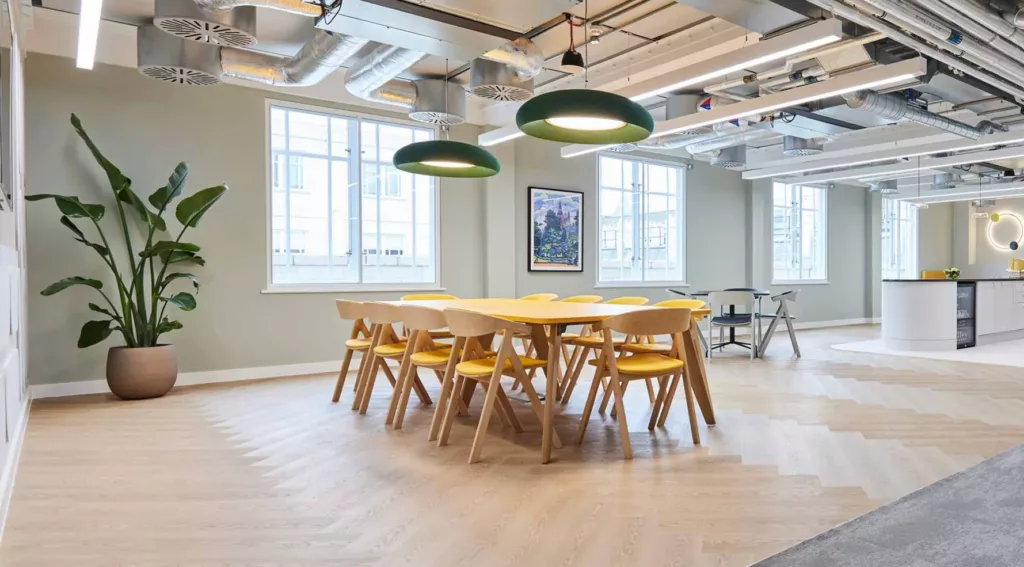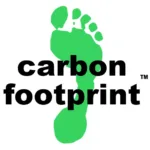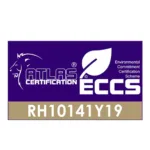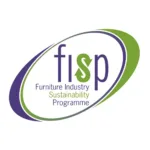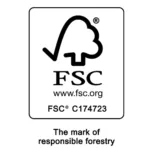The powerhouse of any office, the boardroom. Where decisions are made, coffee is spilt and ‘you’re on mute’ is uttered during every conference call. When in day-to-day use, the boardroom table and its many functions is often taken for granted but should be embraced for its ability to facilitate such a myriad of uses.
In this guide we’ll run through the most important things to look out for when choosing the right finishes for your tables’ intended applications, as well as their pros and cons.
Wood veneers are a natural, popular, and certainly traditional choice of tabletop which gives the appearance of solid wood with a lesser price-tag.
We select the highest quality veneers and treat them with A/C (acid catalysed) lacquer. While this finish gives a good level of protection against damage it is nonetheless important to note that veneer is a natural material and is subject to the effects of atmosphere, heat, and light.
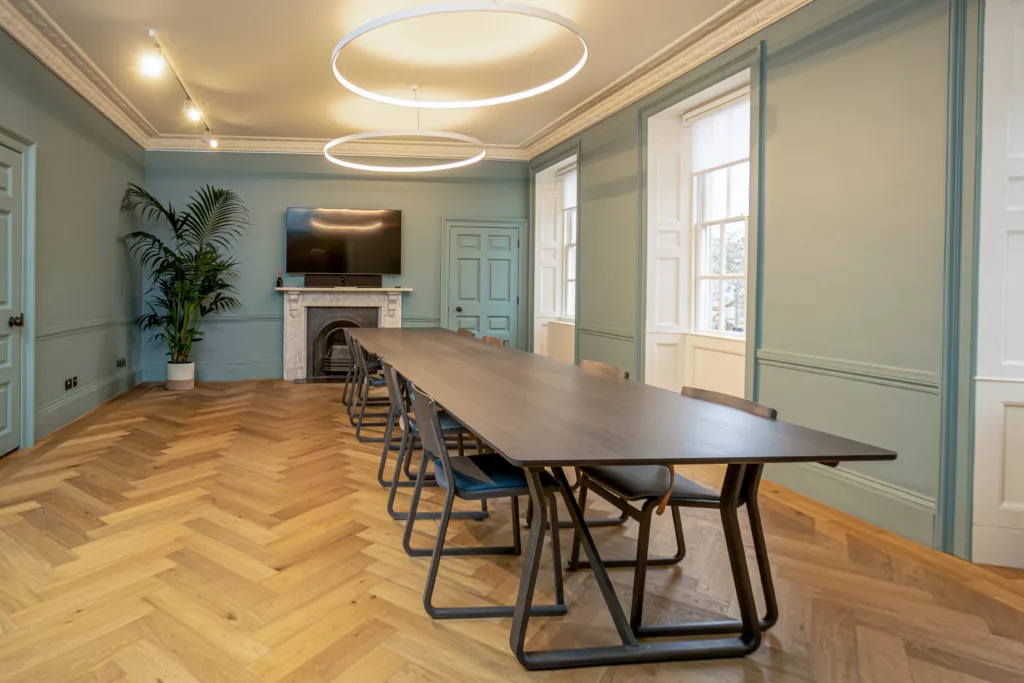
Pros:
- More affordable than solid wood
- No natural flaws or knots
- More sustainable as less timber is used in its production in comparison to solid wood.
- Low maintenance
- Easily cleaned with a soft cloth and warm water
Cons:
- Can show signs of stress if over exposed to heavy air conditioning or over-heated spaces.
- Ring marks can damage the table if coasters aren’t used.
- Can chip after time if not looked after.
The world’s your oyster when it comes to laminate, if you can imagine it there’s a laminate for it, from bright pink to faux marble.
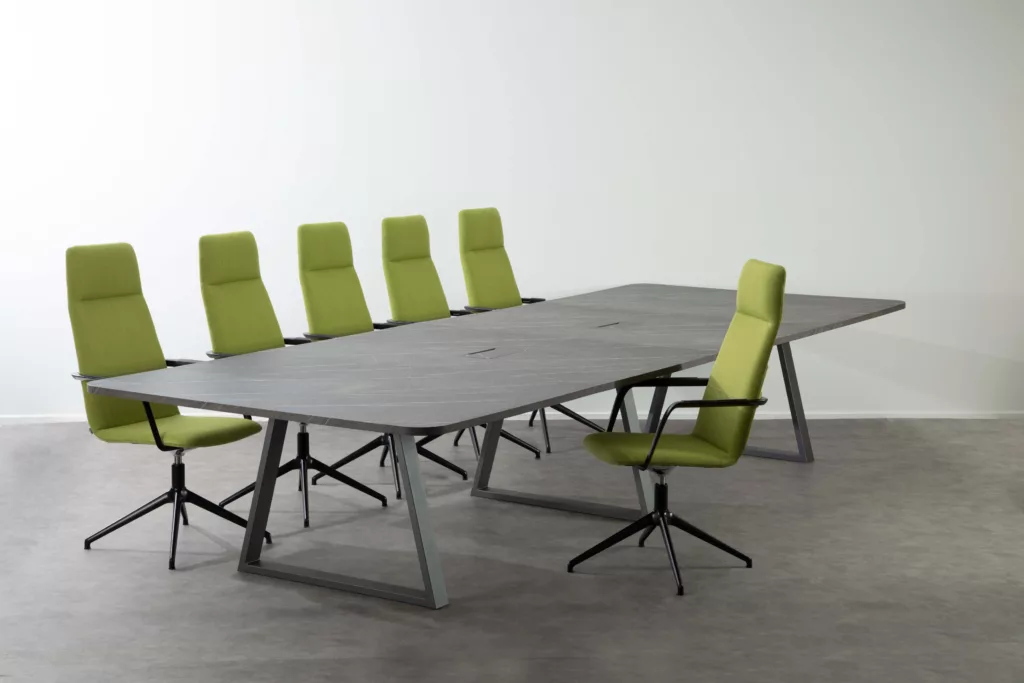
Pros:
- Durable and require minimal maintenance.
- Laminates are a good mid-range option in terms of price.
- Vast range of aesthetics available
- Every sheet is identical and therefore consistent.
Cons:
- Laminate is not scratch resistant.
- Synthetic appearance in comparison to veneer
- Shorter life expectancy than other materials
- In tops wider than 1200mm there may be an increase in the number of top splits due to the standard sheet size being 1300mm (referring to Arpa laminates).
Top tip –
If you’re specifying a large, multi-piece top and a textured laminate is chosen, ensure you request a short grain to create a better grain match on the tabletop.
You may notice this arrow shape on table drawings, this signifies the direction of the grain – e.g., long grain across, short grain down.
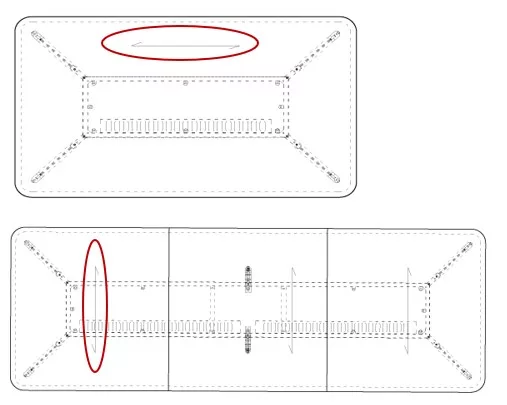
Fenix is the ideal top finish for tables that are intended to stand the test of time.
“Created with proprietary technologies, the external surface of FENIX is characterised by the use of next generation acrylic resins, hardened and fixed through an Electron Beam Curing process. This makes you experience unique features. By touching them, you feel how pleasantly soft they are, with the further surprise of leaving no fingerprints. Thermal healing of superficial micro-scratches is also possible.” (Arpa 2023).
In other words, there are many reasons to choose Fenix – here’s just a few:
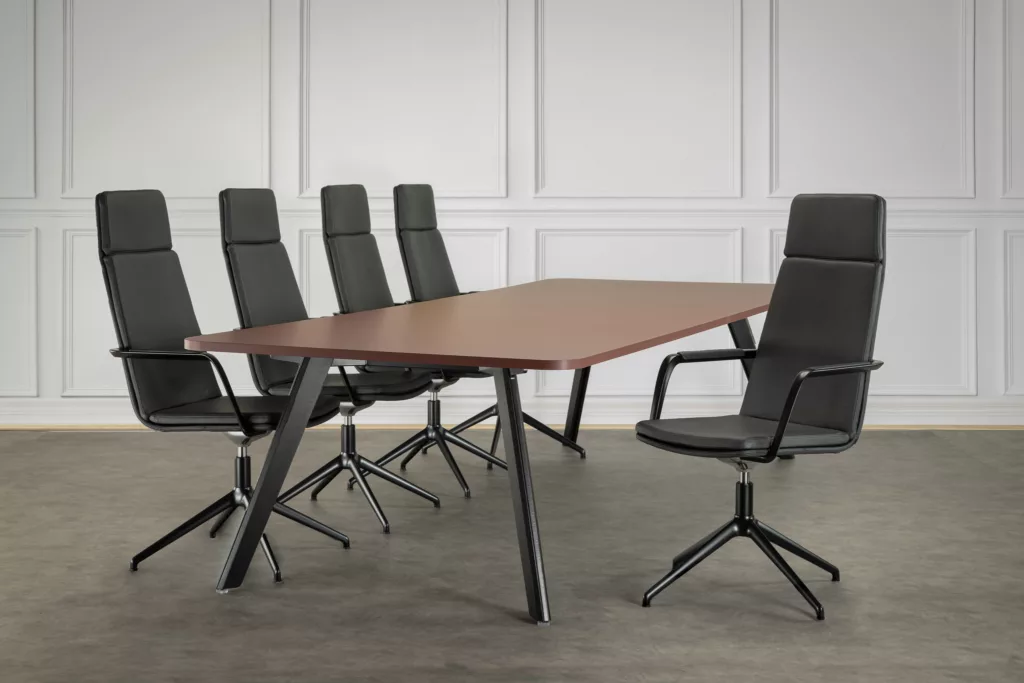
In other words, there are many reasons to choose Fenix – here’s just a few:
Pros:
- Thermal healing of superficial micro-scratches
- Anti-Fingerprint
- Super soft to touch.
- Low light reflectivity, extremely matt surface
- Excellent quality
- Carbon neutral
Cons:
- A more expensive option
- Restricted colour palette
- Standard sheet size is 3050mm x 1300mm – so any tops over 1200mm wide, will have more top splits. That is unless we are able to use the jumbo sheet size which is 4200mm x 1600mm – but be warned these can be on longer lead times.
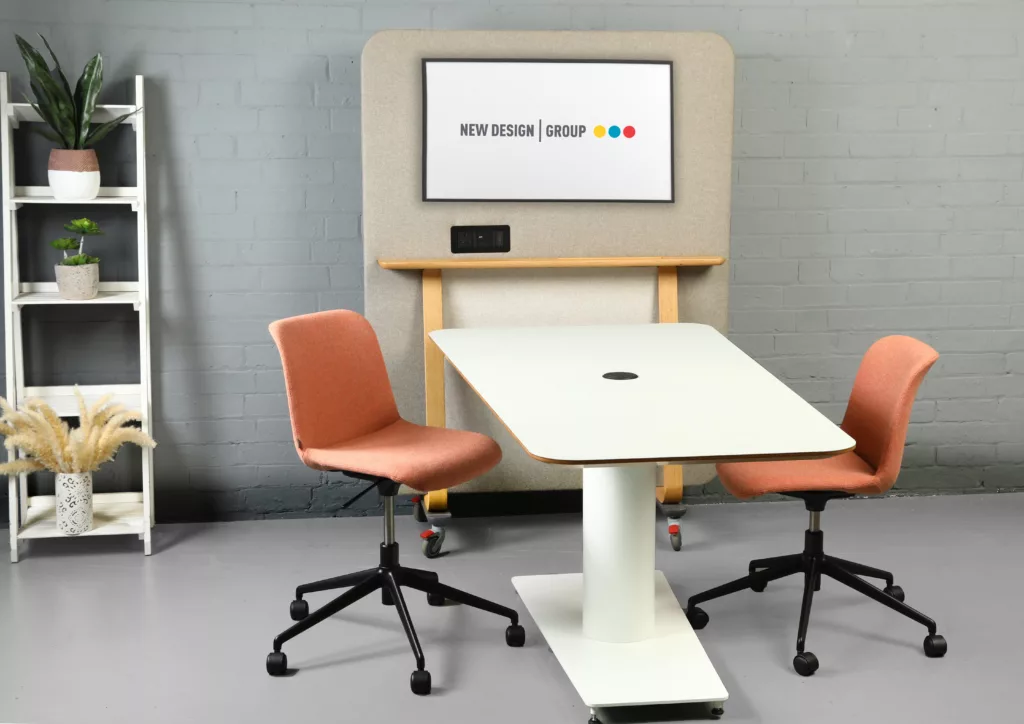
Lino is so much more than a flooring option. Its matt texture makes it ideal for tabletops, along with its easy clean and dust resistant properties. At New Design Group, we use the high quality Forbo Desktop Linoleum range, designed specifically for use on furniture.
Pros:
- Anti-fingerprint
- Natural material, low emissions
- Anti-static properties which don’t attract dust & resits stains
- Colours are not susceptible to fading.
- Carbon neutral
Cons:
- Limited colourways
- A more expensive option
Melamine is an affordable synthetic alternative to veneer.
It features either a chipboard or MDF core, designed for intensive use and is resistant to burns, stains, UV rays and scratches. This makes it ideal for dining or educational environments.
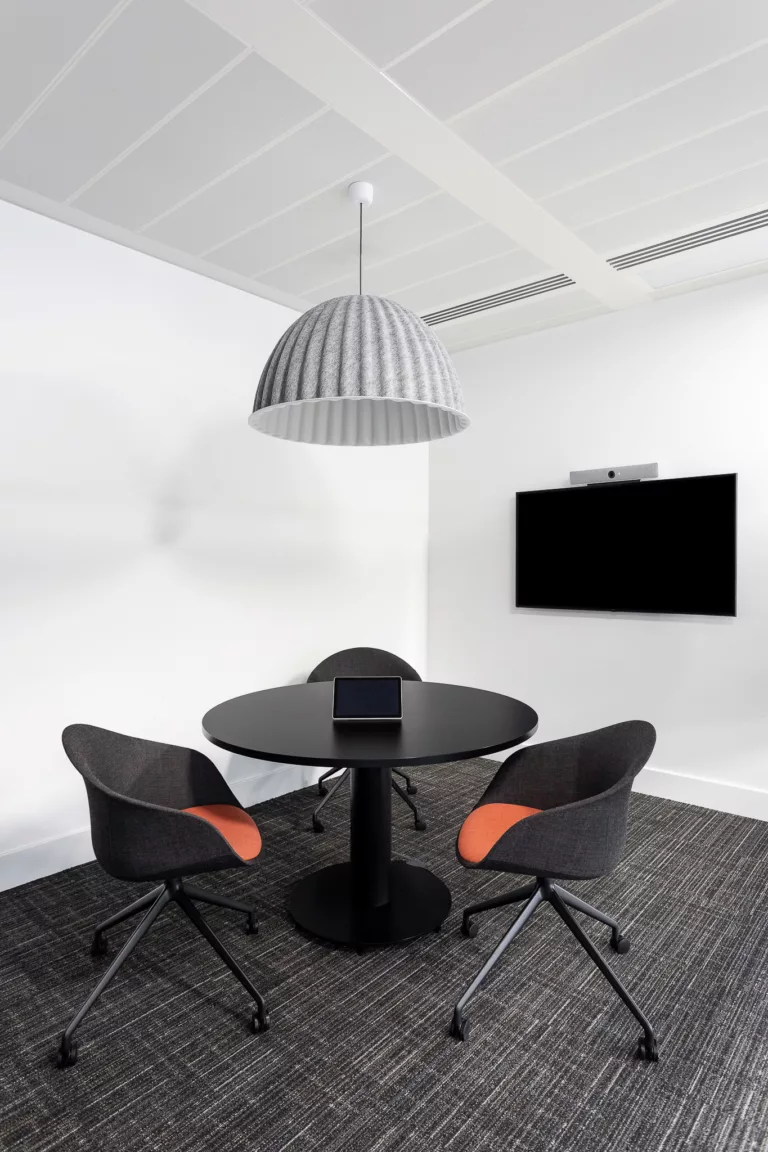
Pros:
- Durable, resistant to many external elements
- Easy to clean
- Consistent finish
- Huge variety of colourways and styles
- Affordable
Cons:
- Susceptible to chipping if low quality.
- Less environmentally friendly than other finishes
In conclusion, there are many pros and cons to each finish but the key to choosing the right one will come down to what’s most important to you. Whether that’s price, aesthetics, or longevity.
Our friendly sales team are on hand to advise you on a project-by-project basis to ensure your client gets the most from their boardroom table.

